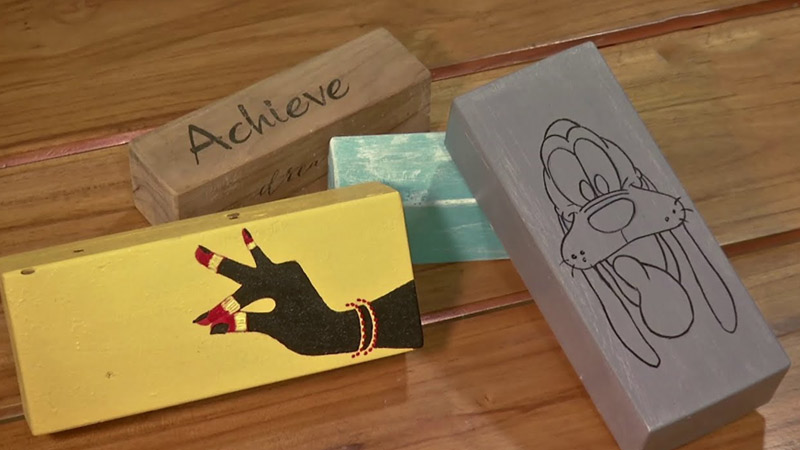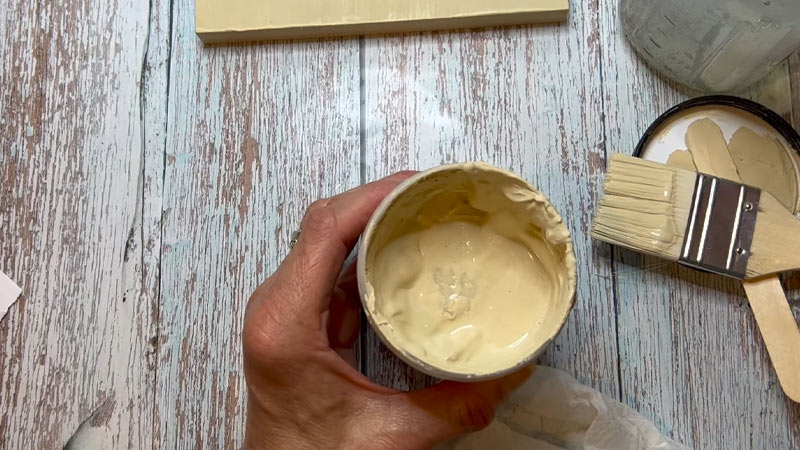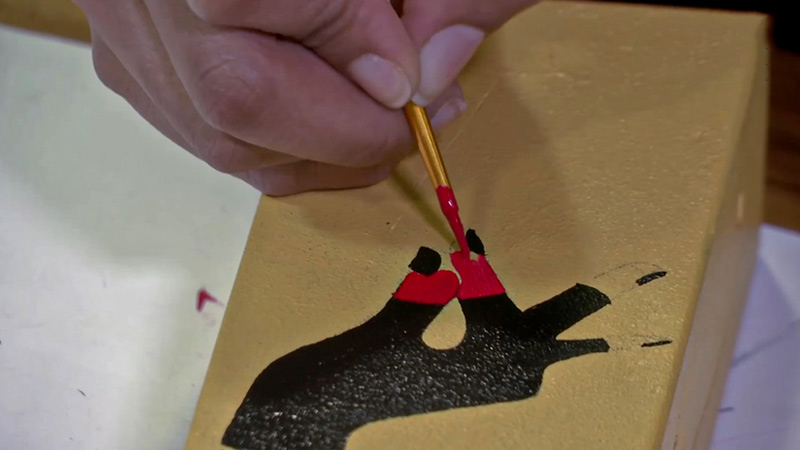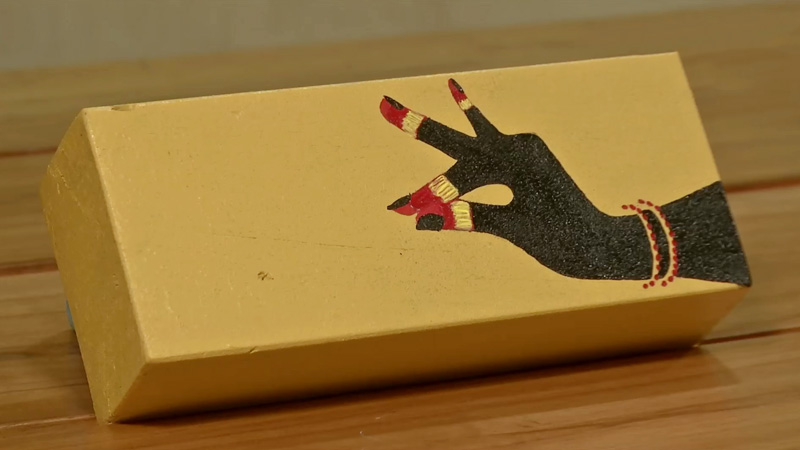Embarking on a creative journey with wood block crafts opens a realm of possibilities, but selecting the right paint is crucial for bringing your vision to life. So, what kind of paint to use for woodblock crafts?
The type of paint you choose can significantly impact the durability, vibrancy, and overall aesthetic of your project.
In this guide, we delve into the intricacies of selecting the ideal paint for woodblock crafts, considering factors such as wood type, project complexity, and desired finish.
Whether you’re a seasoned crafter or a novice exploring the world of DIY, understanding the nuances of paint choices will elevate your creations.
Join us as we explore the diverse array of paint options available, providing insights that empower you to transform simple wooden blocks into stunning works of art.
Let’s embark on this colorful journey, ensuring your wood block crafts stand out with brilliance and lasting beauty.

What Kind Of Paint To Use For Wood Block Crafts?
Selecting the right paint for wood craft is crucial for achieving the desired aesthetic and ensuring the longevity of your creations.
Various factors come into play when deciding on the type of paint to use, including the type of wood, the intended use of the finished project, and personal preferences. Let’s find out what paint to use on wood crafts:
Acrylic Paint
Acrylic paint is versatile, dries quickly, and is available in a wide range of colors. It adheres well to wood surfaces and allows for easy blending and layering. So, it’s great for painting wood blocks.
While acrylics provide vibrant colors, they may not penetrate deeply into the wood, and a primer might be necessary for optimal adhesion.
Oil-Based Paint
Oil-based paints offer a durable finish and deep penetration into the wood, providing long-lasting protection. They are well-suited for projects that require a traditional, glossy appearance.
Longer drying times and the need for proper ventilation are factors to consider when using oil-based paints.
Watercolor Paint

Watercolors can create a subtle, transparent effect on wood, showcasing the natural grain. They are easy to work with and allow for experimentation with different techniques.
Sealing the wood is essential to prevent the paint from soaking in too deeply, affecting the overall finish. Consider this while painting on a wood block using watercolor.
Latex Paint
Latex paint is water-based, making it easy to clean up and environmentally friendly. It adheres well to wood surfaces and is available in various finishes, including matte and glossy.
Some latex paints may require a primer, and it’s essential to choose one suitable for wood.
Spray Paint
Spray paint provides a smooth and even finish, ideal for intricate wood block crafts. It is available in a wide array of colors and finishes.
Proper ventilation and protective measures are necessary for painting wooden blocks with spray paint. It may require additional sealing for long-lasting results.
How Do You Choose the Best Paint for Wood Projects?

When choosing paint for wood blocks, several key considerations play a crucial role in ensuring the success and longevity of your crafting endeavors. Let’s delve deeper into each factor:
Wood Type
Understanding the characteristics of the wood you’re working with is paramount. Hardwoods, such as oak or maple, may have a smoother surface but can be less porous. In contrast, softwoods like pine absorb paint more readily.
For hardwoods, applying a primer is advisable to improve paint adhesion, while softwoods may require less preparation.
Project Intention
Tailoring your paint choice to the intended use of the wood block crafts is essential. If your creations are destined for the outdoors, where they’ll face the elements, opt for a paint that provides weather resistance and UV protection.
For indoor decor, where aesthetics take precedence, focus on paints that deliver the desired visual impact.
Sealing and Priming
Before diving into the world of woodblock paint, take the time to prepare the canvas – in this case, your wooden blocks. Sealing the wood with a suitable sealant not only enhances adhesion but also prevents the paint from penetrating too deeply.
Certain types of paint, especially on porous woods, may benefit from a primer, creating a smoother surface and ensuring the paint adheres uniformly.
Desired Finish
Your choice of finish significantly influences the overall appearance of your wood block crafts. Consider whether a glossy, matte or natural finish aligns with your creative vision.
Glossy finishes may offer a vibrant, reflective surface, while matte finishes provide a subtle, muted effect. The natural finish allows the wood grain to shine through, adding a rustic charm.
Durability
Assessing the level of wear and tear your wood block crafts will endure is crucial in selecting durable paint.
If your creations will be handled frequently, used for functional purposes, or exposed to cleaning agents, opt for paints with high durability.
This ensures the longevity of your painted surfaces, maintaining their visual appeal even under challenging conditions.
How to Paint Wooden Blocks?

Painting wooden blocks is a creative and rewarding process. Here’s a step-by-step guide to help you achieve a professional and visually appealing finish.
Prepare the Wooden Blocks
Start by ensuring the wooden blocks have a smooth surface. Use medium-grit sandpaper to sand away any rough spots or imperfections. Follow up with fine-grit sandpaper for a smoother finish.
Seal or Prime the Wood
Applying a wood sealer or primer is essential for better paint adhesion and preventing the paint from being absorbed too deeply into the wood. Allow the sealer or primer to dry completely according to the product instructions.
Choose Your Paint
Select the type of paint based on your preferences, project requirements, and the desired finish. Acrylic paint, oil-based paint, watercolors, latex paint, or spray paint are popular choices, each offering unique characteristics.
Apply the First Coat
Using a brush, roller, or spray paint, apply a thin, even coat of paint to the wooden blocks. Ensure complete coverage while avoiding drips. Allow the first coat to dry completely before proceeding.
Sand Between Coats
Lightly sand the painted surface between coats with fine-grit sandpaper. This helps create a smooth finish and improves the adhesion of subsequent layers.
Apply Additional Coats
Depending on the opacity and desired color intensity, apply additional coats of paint, allowing each coat to dry thoroughly before proceeding to the next. Two or three coats are usually sufficient.
Consider Techniques
Experiment with different painting techniques if desired. You can try distressing, stenciling, or layering to add unique textures and visual interest to your wooden blocks.
Experiment with layering different colors or shades. This technique adds depth and complexity to your wooden blocks, creating a visually dynamic and appealing result.
Allow for Proper Drying
Ensure that each coat of paint has dried completely before applying subsequent layers or handling the blocks. Follow the recommended drying times for the specific type of paint you are using.
Before applying additional coats or handling the blocks, perform a touch test to confirm that the paint is fully dry. This prevents smudges or imperfections that can occur if the paint is still tacky.
Apply a Topcoat or Sealant (Optional)
For added protection and a polished finish, consider applying a clear topcoat or sealant. This step is optional but can enhance the durability of the painted surface.
Once the paint is fully dry, inspect your wooden blocks for any imperfections or uneven spots. Touch up if necessary, and make sure you’re satisfied with the final result.
Tips for Painting on Wooden Blocks
Ensure a smooth finish by sanding wooden blocks before painting. Use a wood sealer or primer to enhance paint adhesion and prevent uneven absorption.
Choose paint based on your project acrylics for versatility, oil-based for durability, or watercolors for a transparent effect.
Experiment with layering coats and techniques to add depth and visual interest. Allow each coat to dry thoroughly before applying the next.
Consider a clear topcoat for added protection and a professional finish. Use a drop cloth or dedicated workspace for easy cleanup.
FAQs
What type of paint is best for woodblock crafts?
Acrylic paint is versatile and popular for its vibrant colors. Oil-based paint offers durability, while watercolors provide a transparent effect. Choose based on your project needs.
Do I need to seal or prime the wood before painting?
Yes, sealing or priming is essential. It enhances adhesion, prevents uneven absorption, and ensures a smooth painting surface, especially when working with porous wood.
How many coats of paint should I apply to wooden blocks?
Typically, 2-3 coats are sufficient. However, the number may vary based on the desired opacity and the type of paint being used.
Can I use spray paint for woodblock crafts?
Yes, spray paint is suitable for woodblock crafts. It provides an even finish, but proper ventilation and protective measures are essential.
How long should I wait between coats and before handling painted blocks?
Allow each coat to dry completely before applying the next. Follow the recommended drying times provided by the paint manufacturer to avoid smudging or imperfections. Touch the surface to ensure it’s fully dry before handling.
Conclusion
The choice of paint for your wood block crafts is not just about color; it’s a key determinant of the project’s longevity and visual impact.
By considering the specific needs of your wooden blocks, the intricacies of different paint types, and your desired aesthetic, you can elevate your crafting experience.
Whether it’s acrylics for vibrant hues, stains for a natural look, or sealers for protection, each option brings its charm to the table.
Armed with this knowledge, you’re well-equipped to turn simple wooden blocks into personalized masterpieces that withstand the test of time.
So, go ahead, unleash your creativity, and paint your wooden blocks with confidence, knowing that the right choice will make your crafts not just visually appealing but also enduring.
Choose your wood block paint wisely to infuse longevity and charm into your crafts, ensuring they remain timeless expressions of creativity.
Leave a Reply